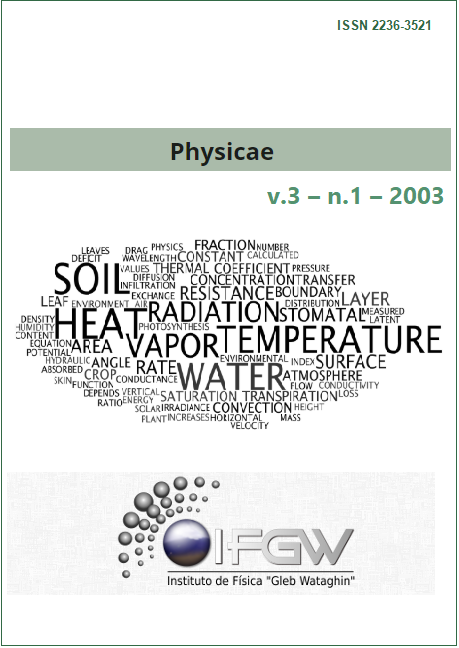Resumo
Deep inelastic electron-proton scattering has been a fundamental tool for the understanding of the partonic structure of hadrons. In recent years new experimental findings in deep inelastic scattering coming from DESY brought a new light into an important domain of hadronic physics, the diffractive interaction of hadrons, dominated by the exchange of a color singlet with the quantum numbers of the vacuum, known as pomeron. Due to its long distance nature, diffractive reactions reside outside the region of perturbative quantum chromodynamics applicability, and therefore lack a proper quantum field theory description. In this article, we present a naive phenomenological model that associates non-perturbative aspects of diffraction with the dynamics of QCD, to describe some experimental data from DESY and to built a simple partonic picture of the pomeron. From the model, we found that the pomeron structure function can be described as dominated by gluons.
Referências
Donald H. Perkins, Introduction to High Energy Physics (chap. 8) Addison-Wesley Publishing, 1987; I. J. R. Aitchison and A. J. G. Hey, Gauge Theories in Particle Physics (chap. 9), IOP Publishing, Bristol, 1989.
P. D. B. Collins, An Introduction to Regge Theory and High Energy Physics, Cambridge University Press, Cambridge, (1977);
G. Alberi and G. Goggi, Phys. Rep. 74, 1 (1981).
C. Cohen-Tannoudji, Quantum Mechanics, (Vol. II, chap. VIII, complement B), Hermann, Paris, 1977.
For a very padagogical review on Regge poles applied to high energy interactions see, for instance, J. M. Menon, Introduction to Soft Diffraction: Some Results and Open Problems, Proceedings of LISHEP 2002 - Session B: Advenced School on High Energy Physics, Rio de Janeiro, RJ, (2002). It will be soon available on the arXiv.org e-print archive.
E. Predazzi, Diffraction: Past, Present and Future, Lecutures given at Hadrons VI, Florianopolis, Brasil, (1998), hep-ph/809454; V. Barone and E. Predazzi, High Energy Particle Diffraction, Springer Verlag, (2002).
F. Halzen and A. D. Martin, Quarks and Leptons: An Introductory Course in Modern Particle Physics, John Wiley and Sons, 1984.
R. J.M. Covolan, J.Montanha and K. Goulianos, Phys. Lett. B389, 176 (1996).
A. Donnachie and P. V. Landshoff, Phys. Lett. B296, 227 (1992).
G. Ingelman and P. Schlein, Phys. Lett. B152, 256 (1985).
UA8 Collaboration, R. Bonino et al., Phys. Lett. B211, 239 (1988).
J. R. Forshaw and D. A. Ross, Quantum Chromodynamics and the Pomeron, Cambridge University Press, Cambridge, (1997).
H1 Collaboration, T. Ahmed et al., Phys. Lett. B348, 681 (1995).
ZEUS Collaboration, M. Derrick et al., Zeit. Phys. C 68, 569 (1995).
H1 Collaboration, C. Adloff et al., Z. Phys. C 76, 613 (1997).
M. Batista, R. J. M. Covolan and J. Montanha, Phys. Rev. D 65, 096006 (2002).
K. Goulianos and J. Montanha, Phys. Rev. D 59, 114017 (1999).
G. Altareli and G. Parisi, Nucl. Phys. B 126 297 (1977).
K. Goulianos, Phys. Rep. 101, 169 (1983).
A publicação é de acesso aberto, sendo os autores responsáveis pelo seu conteúdo. Utiliza-se a licença do Creative Commons para a disseminação da publicação em relação aos direitos autorais.

